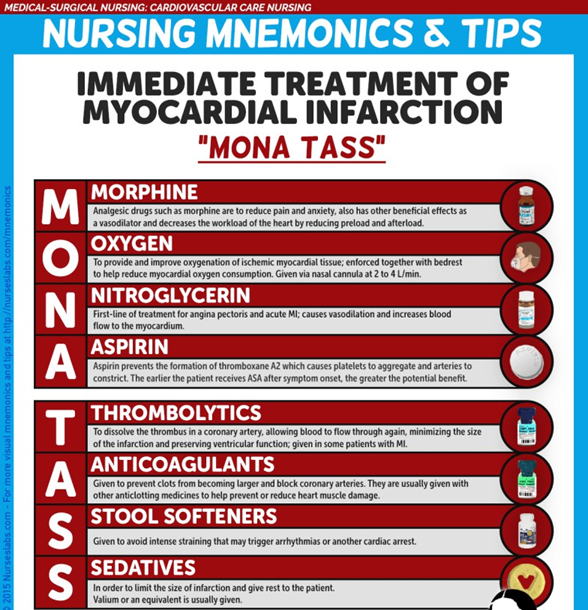A nurse is reviewing the client's diagnostic results and vital signs.
Which of the following actions should the nurse take? Select all that apply.
Anticipate client to be prepped for cardiac catheterization.
Assist with a continuous heparin infusion.
Encourage the client to ambulate.
Anticipate an increased dosage of metoprolol.
Obtain a prescription for client to be NPO.
Request a prescription for an antibiotic.
Correct Answer : A,B,D,E
Chest pain radiating to the left arm is characteristic for angina in coronary artery disease. This is suggested more by the client’s medical history of hypertension, hyperlipidemia and type 2 diabetes mellitus.
Clients with angina are scheduled for diagnostic cardiac catheterization to assess the extent of coronary blockage
Heparin is used to prevent the propagation of a clot that is formed on an unstable atherosclerotic plaque. Beta blockers are prescribed to lower the heart rate. This reduces the myocardial demand for oxygen.
The firstline medication include antiplatelets unless there's concurrent venous thromboembolism.
Keeping the client NPO within 2 hours of the procedure is important to prevent aspiration whole under sedation.
Ambulation increases demand on the heart which may worsen the pain Antibiotics have no role in coronary artery disease.

Nursing Test Bank
Naxlex Comprehensive Predictor Exams
Related Questions
Correct Answer is C
Explanation
C. Metabolic alkalosis is characterized by an increase in serum bicarbonate levels, resulting in an imbalance in the body's acid-base equilibrium towards alkalinity. Excessive ingestion of antacids, particularly those containing bicarbonate or calcium carbonate, can lead to an excessive accumulation of bicarbonate ions in the body, causing metabolic alkalosis.
A. Excessive ingestion of antacids would not typically cause metabolic acidosis because antacids containing bicarbonate or calcium carbonate actually increase bicarbonate levels, leading to alkalosis rather than acidosis.
B. Respiratory alkalosis occurs due to hyperventilation, leading to a decrease in carbon dioxide levels and subsequent alkalosis. Excessive ingestion of antacids is not typically associated with respiratory alkalosis.
D. Respiratory acidosis occurs due to hypoventilation, leading to an increase in carbon dioxide levels and subsequent acidosis. Excessive ingestion of antacids is not typically associated with respiratory acidosis.
Correct Answer is A
Explanation
A. Turning the client on their side helps prevent aspiration (inhaling fluid or vomit into the lungs) and promotes drainage of oral secretions, reducing the risk of airway obstruction during the seizure.
B. While assessing neurological status is important, it should be done after ensuring the client's safety during the seizure. This can be done after the seizure has stopped.
C. While obtaining vital signs is important for assessing the client's overall condition, it is not the immediate priority during an active seizure. Vital signs can be assessed once the seizure has stopped and the client's safety has been ensured.
D. Notifying the rapid response team may be necessary if the seizure persists beyond a certain duration (status epilepticus) or if there are complications. However, the first action should be to ensure the client's immediate safety by turning them onto their side to prevent aspiration.
Whether you are a student looking to ace your exams or a practicing nurse seeking to enhance your expertise , our nursing education contents will empower you with the confidence and competence to make a difference in the lives of patients and become a respected leader in the healthcare field.
Visit Naxlex, invest in your future and unlock endless possibilities with our unparalleled nursing education contents today
Report Wrong Answer on the Current Question
Do you disagree with the answer? If yes, what is your expected answer? Explain.
Kindly be descriptive with the issue you are facing.
